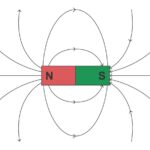The market research firm IDTechEx recently updated its predictions for developments in organic LED (OLED) lighting technology. Its conclusion: Things look a bit hazy. OLEDs faced a challenge from the beginning because by the time OLEDs came along, conventional inorganic LED suppliers had accumulated enough production experience to improve LED performance and reduced costs. This, in turn, created a large gap between the two technologies that shows no signs of narrowing, IDTechEx says.
IDTechEx also says the OLED lighting industry generally had a confused commercialization strategy. The LED incumbents viewed OLEDs as a threat. So they only invested in the technology to hedge their bets. Some ignored the potential uniqueness of OLED lighting, trapping themselves in the rigid (glass-based) and/or high-power corner of the markets.
Unsurprisingly, all these led to failures and disillusionment. Many suppliers simply gave up, thinning the field to a few committed players. Most notable amongst them are LG Chem and Konica Minolta. Both are from Asia and both see in OLED lighting a way into the immense prize that is the lighting market, IDTechEx says.

IDTechEx made cost projections in 2013 that have largely held true. Ditto for an IDTechEx market revenue forecast developed in 2013.
In 2014, IDTechEx forecast that the market would be smaller than $80m by 2018 and still thinks this will hold true. The research firm anticipated in 2013 that production costs would drop to around $200/klm by 2015, confirmed when LG Chem announced an aggressive sales price of $200/klm in the middle of last year. The firm thinks panels were being sold at or below cost to stimulate the market.
IDTechEx Research had also forecasted that OLED lighting will reach more than $1.8 billion in 2025 at the panel level. The firm says it is still optimistic about the long-term prospects of this technology. The reason is that OLED lighting exhibits key qualities of a disruptive technology: It underperforms and is overpriced when measured on the standard industry figures-of-merit such as lumens-per-watt and dollars-per-kilolumen. But it can create new markets that value novel figures-of-merit such as large-area emission, low weight, and flexibility.

TV maker LG uses OLED technology in its 4K resolution TVs. LG claims OLEDs deliver the purest blacks and most brilliant colors of any flat screen technology.
IDTechEx Research believes these differentiators will let OLED lighting find use in a series of niche markets. Suppliers will use their accumulated industry experience to field OLEDs useful in an expanding series of areas. Two fundamental qualities of the lighting market will make this expansion possible: enormous product diversity and importance of aesthetics. This contrasts with, for example, the photovoltaic market where there is little product diversity, so such emerging technologies as organic PVs find it exceedingly hard to create niches.






